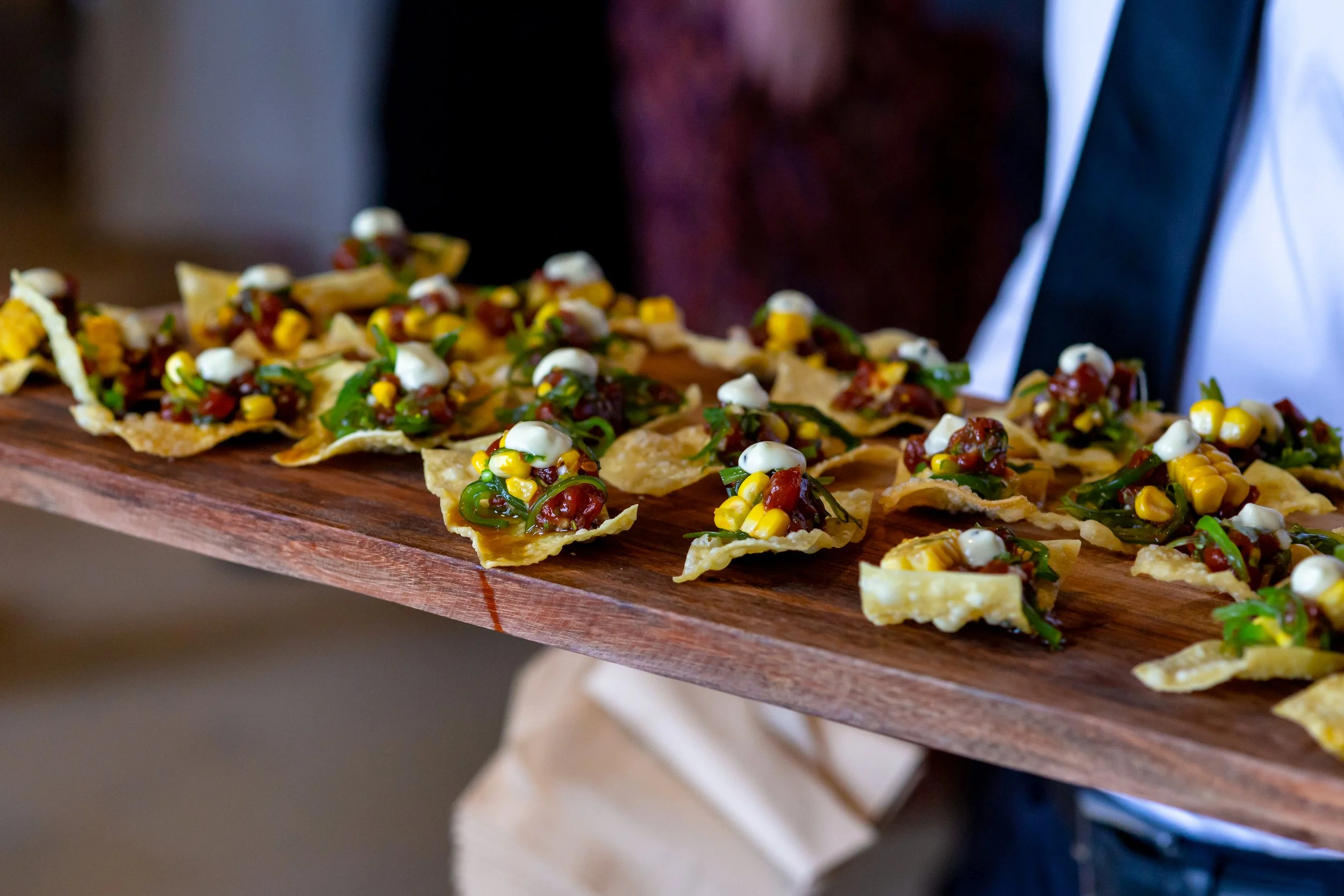Feed the people!
So many important moments happen around food. Conversation over the morning coffee in the office kitchen, networking at an industry event or celebrating at a gala dinner.
Working at City of Sydney in my early 20’s and being so put out by the requirements for locally sourced wine and food that was designed to be donated if unused. Now, I am understand that it’s small changes that have a HUGE impact on waste and supporting organisations doing the right thing is essential.
Knowing what to choose can be a little overwhelming so here’s a simple guide to making a more considered choice.
Where…. does it come from and where does it go?
This seems simple but you would be surprised how challenging it is to buy local produce. Start with Australian made, if you can from your state and then (if you would like a golden star), from your region. The general rule is that the further it comes from, the more energy it uses to get to you.
Thinking about where everything ends up is good to think about at the start. If you have leftovers can they be donated? What happens to your scraps? Are they composted locally or in a facility? One of the cafes I used to frequent told me that it’s cheaper for him to pay for the scraps to be picked up than to increase his landfill skip.
Make sure you engage Oz Harvest to collect any leftovers. There are restrictions on what can be donated so make sure your caterer is aware. Learn more here.
What…. you select makes a difference
Be guided by seasonal produce ask your chef to make this the focus of the menu
No great gathering can take place without good coffee. Opt for porcelain or edible (yup, Good Edi have got you covered) the last option is ask for them to be “home” compostable and don’t offer a lid unless they ask. You could even go as far as to add sugar when they are being made so there is no need for individual packets and spoons
Opt for fewer meat options or a higher percentage of vegetarian serves - meat takes more energy and creates more carbon to produce
Select meat that has been produced consciously, local, grass fed and finished, free range
Can you choose all or partially organic? This means that there were no chemicals used in it’s production, non given to the animals or sprayed on the crops (also, no runoff into our waterways which is a bonus!)
Select canapes that can be served without plastic
If you need to pack, seal or wrap use a compostable option
Put smaller plate on the buffet or serve slightly smaller portions with the options to get seconds
Please, I beg of you please don’t buy individually wrapped items
Integrate vegan options, they can be tasty, substantial and conscious.
Henri from Radish Events says “vegan + vegetarian options don't have to be boring roasted veggies. Vegan dishes can be just as exciting (or even more!) than their non-vegan alternatives. It all depends on how creative your chosen supplier is.”
Talk to your suppliers - most want your business and can be accommodating with requirements (you just have to ask!)
Who…. to support
Select a caterer who understands and appreciates the importance of their supply chain like Radish Events!
Can you choose from a local distributor, organisation or supplier
Tell their story - regional or producer descriptions to the menu or labels
E.g. “Cheeses sourced from Jake and Jill at Old MacDonald's Farm in the Hunter Valley.” If people like them then they know how to support this local family run business
Organisations like Our Cow can track their meat back to the farm and connect you with the farmer and their story
Henri from Radish Events shares “Beware of greenwashing. Words like "eco-friendly" and "bio-degradable" are used sparingly nowadays and without any real impact to back it up. Looks for real clues as to how your supplier is tackling issues like carbon emissions, ethical sourcing, plastic packaging, etc.”
International Convention Centre in Sydney has this fun initiative where they are creating edible bouquets for tables and then using them post event in stews, casseroles and baked treats. They’re beautiful and get the chance at a second life!
This is your invitation to challenge your venue, caterer or chef to make a difference. Tell your guests the story of your changes and allow them to be connected with the food that fuels them and add to their experience.
Go forth and conquer!
